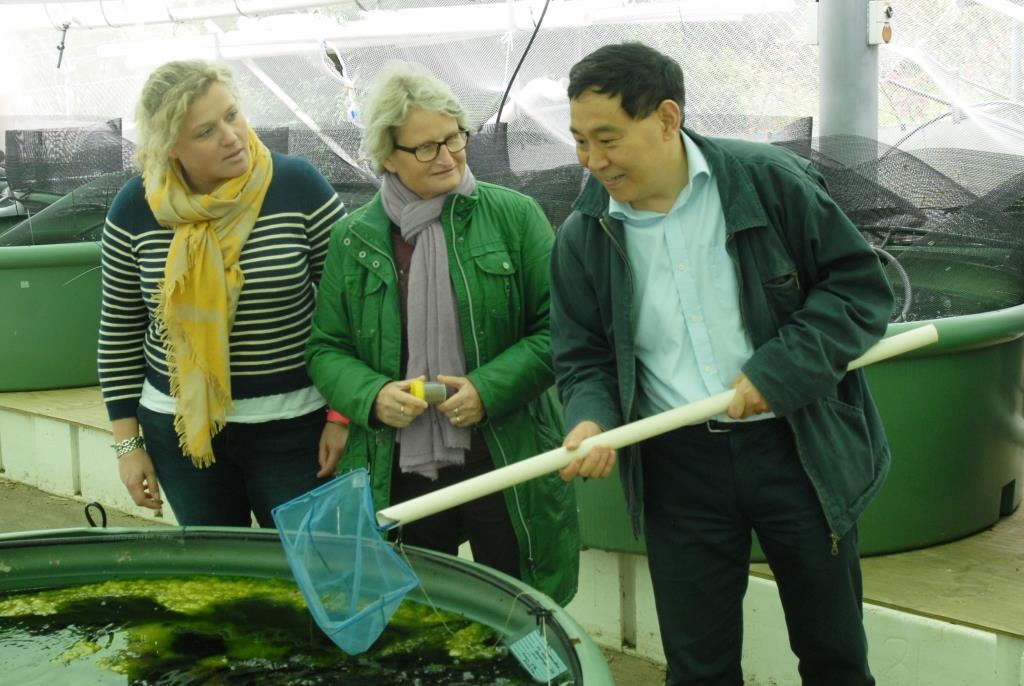
A new diet for farmed barramundi could be on the menu under a new research collaboration between Flinders and the US Ohio Soybean Council.
Barramundi aquaculture is a growing industry in Australia, with more than 3500 tonnes of the fish produced for domestic and overseas markets every year.
Now this popular fish, also known as Asian seabass, could have a more sustainable tasty pellet in their fish cages.
Feeding barramundi with more non-marine fishmeal will not only help to save declining wild fish stocks but give the aquaculture industry a cheaper alternative, says Flinders University aquaculture expert Professor Jian Qin.
The US partner is funding the “Replacement of fishmeal with soybean meal (EnzoMealTM) in the diet of a warm water fish barramundi in Australia” project to test chemically treated soy protein as an alternative fishmeal material.
“This study aims to compare fish growth performance by feeding barramundi with diets containing different types of soybean meal at optimal and sub-optimal water temperatures,” says Professor Qin.
“While soybean meal is the most common alternative source of plant protein to replace fishmeal in the feed, the amount of soybean meal included in the barramundi meal is limited.
“We need to make sure it has a high enough protein level to sustain healthy growth, along with a favourable amino acid profile, high nutrient digestibility and acceptable palatability.”
In aquaculture, fish feed is the largest production cost, with cultured fish requiring up to 50% crude protein in their diet, along with essential and non-essential amino acids, usually taken from secondary wild-caught fish.
In some marine aquaculture plant-based or alternatives to wild-caught fishmeal such as anchovies account for up to 70% of the content of fish feed.
Global demand for fishmeal is rising as aquaculture of many species increases to meet accelerating human demand. But fishmeal prices are rising due to declining supplies.
Barramundi (Lates calarifer, also known as Asian seabass) is found from the fresh and saline waters of northern Australia as far as Iran and tropical western Indian Ocean – and also in the rivers of China, Taiwan and Papua New Guinea.
“It is a very popular fish so has the potential to expand in aquaculture enterprises, particularly to supply the large consumer bases in Asia,” says Professor Qin, who specialises in fish diet and nutrition.
Professor Qin and Associate Professor Sophie Leterme, from the School of Biological Sciences, and Professor Amanda Ellis, from the School of Chemical and Physical Sciences, will support Flinders postgraduate Dr Zhenhua Ma on the one-year Ohio Soybean Council research project.
The aquaculture industry in Australia is worth around $2.6 billion, compared to aquaculture production in Japan about $14 billion and China where it is worth approximately $40 billion. Australia’s ocean territory is estimated at 10 times that of China and four times that of Japan.
The aquaculture program at Flinders started in 1997. In the past 20 years, more than 300 Bachelor students have graduated and these graduates have come the major working force for the aquaculture industry in South Australia. After several changes in the degree program, the single aquaculture degree has become a double degree of BSc in Marine Biology and Aquaculture, which is still quite attractive to students as it diversifies career opportunities for students.

